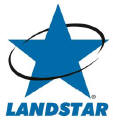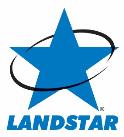Transportation revenue generated by rail intermodal, air cargo and ocean cargo carriers (collectively, the “multimode capacity providers”) for the
2017 thirty-nine-week2022 thirteen-week period was
$139,278,000,$194,745,000, or
5%10% of total revenue, an increase of
$5,791,000,$115,437,000, or
4%146%, compared to the
2016 thirty-nine-week2021 thirteen-week period. Revenue per load on revenue generated by multimode capacity providers increased approximately
6%112% in the
2017 thirty-nine-week2022 thirteen-week period compared to the
2016 thirty-nine-week2021 thirteen-week period,
whileand the number of loads hauled by multimode capacity providers
decreasedincreased approximately
2%16% over the same period.
The increase in revenueRevenue per load
of 6% wason loads hauled by multimode capacity providers increased for all modes, primarily
driven by an increase in revenue per load generated by air cargo carriers, entirely attributabledue to
strong U.S. and global economic recoveries coupled with the impact of
global supply chain disruptions which were particularly acute with respect to international ocean and air
loadings provided in support of disaster relief effortsfreight. Revenue per load on loads hauled via ocean, air and rail intermodal increased 128%, 122% and 25%, respectively, during the
2017 thirty-nine-week2022 thirteen-week period as compared to the 2021 thirteen-week period.
Also, revenueRevenue per load on revenue generated by multimode capacity providers is influenced by many factors, including revenue mix among the various modes of transportation used, length of haul, complexity of freight, density of freight lanes, fuel costs and availability of capacity. The
decreaseincrease in
the number of loads hauled by multimode capacity providers was due to
a 64% increase in ocean loadings and an
11% decrease8% increase in rail
intermodal loads, entirely attributable to decreased loadings,
at two specific agencies, partially offset by a
22%32% decrease in air loadings. The 64% increase in
loads hauled by air and ocean
cargo carriers. The 22% increase in loads hauled by air and ocean cargo carriers was broad-based across many customers.Purchased transportation was 76.7% and 76.1% of revenue in the 2017 and 2016 thirty-nine-week periods, respectively. The increase in purchased transportation as a percentage of revenue was primarily due to an increased rate of purchased transportation paid to Truck Brokerage Carriers and a decrease in the percentage of revenue contributed by BCO Independent Contractors, which typically has a lower rate of purchased transportation than revenue generated by Truck Brokerage Carriers. Commissions to agents were 8.1% and 8.3% of revenue in the 2017 and 2016 thirty-nine-week periods, respectively. The decrease in commissions to agents as a percentage of revenue was primarily attributable to a decreased net revenue margin on revenue generated by Truck Brokerage Carriers.
Investment income was $1,733,000 and $1,100,000 in the 2017 and 2016 thirty-nine-week periods, respectively. The increase in investment income was primarily due to higher average rates of return on investments during the 2017 period and a higher average investment balance held by the insurance segment in the 2017 period.
Other operating costs increased $1,013,000 in the 2017 thirty-nine-week period compared to the 2016 thirty-nine-week period and represented 5.7% of gross profit in the 2017 period compared to 6.1% of gross profit in the 2016 period. The increase in other operating costs compared to the prior year was primarily due to decreased gains on sales of used trailing equipment and an increased provision for contractor bad debt, partially offset by decreased trailing equipment maintenance costs due to a lower average age of the Company-owned trailer fleet. The decrease in other operating costs as a percentage of gross profit was caused by the effect of increased gross profit, partially offset by the increase in other operating costs.
Insurance and claims increased $3,538,000 in the 2017 thirty-nine-week period compared to the 2016 thirty-nine-week period and represented 11.8% of gross profit in the 2017 period compared to 12.1% of gross profit in the 2016 period. The increase in insurance and claims expense compared to prior year was due to increased severity of current year claims in the 2017 period, increased net unfavorable development of prior years’ claims in the 2017 period and increased insurance premiums on the Company’s commercial trucking liability coverage. Unfavorable development of prior years’ claims was $1,327,000 and $698,000 in the 2017 and 2016 thirty-nine-week periods, respectively. The decrease in insurance and claims as a percent of gross profit was caused by the effect of increased gross profit, partially offset by the increase in insurance and claims costs.
Selling, general and administrative costs increased $16,968,000 in the 2017 thirty-nine-week period compared to the 2016 thirty-nine-week period and represented 31.3% of gross profit in the 2017 period compared to 29.9% of gross profit in the 2016 period. The increase in selling, general and administrative costs compared to prior year was attributable to a $13,634,000 provision for incentive compensation in the 2017 thirty-nine-week period compared to an $875,000 provision in the 2016 thirty-nine-week period and increased wages. The increase in selling, general and administrative costs as a percent of gross profit was due primarily to the increase in selling, general and administrative costs, partially offset by the effect of increased gross profit.
Depreciation and amortization increased $3,852,000 in the 2017 thirty-nine-week period compared to the 2016 thirty-nine-week period and represented 7.6% of gross profit in the 2017 period compared to 7.4% of gross profit in the 2016 period. The increase in depreciation and amortization expenses was due to an increased number of owned trailers in response to increased customer demand for the Company’s drop and hook services and a lower average age of the trailer fleet during the 2017 thirty-nine-week period as compared to the 2016 thirty-nine-week period. The increase in depreciation and amortization as a percentage of gross profit was primarily due to the increased depreciation costs, partially offset by the effect of increased gross profit.
Interest and debt expense in the 2017 thirty-nine-week period decreased $166,000 compared to the 2016 thirty-nine-week period.
The provisions for income taxes for the 2017 and 2016 thirty-nine-week periods were based on estimated annual effective income tax rates of 37.8% and 38.1%, respectively, adjusted for discrete events, such as benefits resulting from disqualifying dispositions of the Company’s common stock by employees who obtained the stock through exercises of incentive stock options. The effective income tax rates for the 2017 and 2016 thirty-nine-week periods were 34.5% and 37.6%, respectively. The effective income tax rate for the 2017 thirty-nine week period was lower than the 35% statutory federal income tax rate primarily as a result of federal domestic production activities deductions and research and development credits recognized as discrete items during the thirteen-week period ended September 30, 2017, partially offset by the effect of state taxes and the meals and entertainment exclusion. The effective income tax rate for the 2016 thirty-nine-week period was higher than the statutory federal income tax rate primarily as a result of state taxes and the meals and entertainment exclusion. The effective income tax rate in the 2017 thirty-nine-week period of 34.5% was less than the 37.8% estimated annual effective income tax rate primarily as a result of federal domestic production activities deductions and research and development credits recognized during 2017 of approximately $5,200,000, excess tax benefits recognized on stock-based compensation arrangements resulting from the Company’s adoption of ASU2016-09 during 2017 and disqualifying dispositions of the Company’s common stock by employees who obtained the stock through the exercises of incentive stock options in the 2017 period. The effective income tax rate in the 2016 thirty-nine-week period of 37.6% was less than the 38.1% estimated annual effective income tax rate primarily due to certain federal income tax credits realized in the 2016 period and disqualifying dispositions of the Company’s common stock by employees who obtained the stock through exercises of incentive stock options in the 2016 period.
The net loss attributable to noncontrolling interest of $23,000 in the 2017 thirty-nine-week period represents the noncontrolling investors’ 30% share of the net loss incurred by Landstar Metro and Landstar Servicios.
Net income attributable to the Company was $112,336,000, or $2.68 per common share ($2.67 per diluted share), in the 2017 thirty-nine-week period. Net income attributable to the Company was $97,776,000, or $2.32 per common share ($2.31 per diluted share), in the 2016 thirty-nine-week period.
THIRTEEN WEEKS ENDED SEPTEMBER 30, 2017 COMPARED TO THIRTEEN WEEKS ENDED SEPTEMBER 24, 2016
Revenue for the 2017 thirteen-week period was $943,430,000, an increase of $155,492,000, or 20%, compared to the 2016 thirteen-week period. Transportation revenue increased $155,295,000, or 20%. The increase in transportation revenue was attributable to an increased number of loads hauled of approximately 13% and increased revenue per load of approximately 6%. The Company recognized approximately $23,000,000 in revenue, on approximately 16,000 loads, in the 2017 third quarter in support of local, state and federal relief efforts related to recent hurricanes that impacted Texas, the southeastern United States and Puerto Rico. Reinsurance premiums were $11,738,000 and $11,541,000 for the 2017 and 2016 thirteen-week periods, respectively.
Truck transportation revenue generated by third party capacity providers for the 2017 thirteen-week period was $877,618,000, representing 93% of total revenue, an increase of $144,755,000, or 20%, compared to the 2016 thirteen-week period. The number of loads hauled by third party truck capacity providers increased approximately 13% in the 2017 thirteen-week period compared to the 2016 thirteen-week period, and revenue per load increased approximately 6% compared to the 2016 thirteen-week period. The
increase in the number of loads hauled via truck compared to the 2016 thirteen-week periodloadings was due to a broad-based increase in demand across many customers and industries for Landstar’s various truck service offerings and the impact of approximately 16,000 loads hauled in support of disaster relief efforts. TheCompany’s ocean services, whereas the 8% increase in revenue per load on loads hauled via truck of 6% was due to a tighter freight environment experienced during the 2017 thirteen-week period, which resulted in less readily available truck capacity as compared to the 2016 thirteen-week period, and the impact of higher diesel fuel costs on loads hauled via Truck Brokerage Carriers. The freight environment during the 2017 thirteen-week period was also impacted by the hurricanes experienced in Texas and the southeastern United States, which further tightened capacity in the latter part of the quarter. Revenue per load on loads hauled via unsided/platform equipment increased 8%, revenue per load on loads hauled via van equipment increased 5% and revenue per load on less-than-truckloadrail loadings increased 4% as compared to the 2016 thirteen-week period. Fuel surcharges on Truck Brokerage Carrier revenue identified separately in billings to customers and included as a component of Truck Brokerage Carrier revenue were $16,171,000 and $14,016,000 in the 2017 and 2016 thirteen-week periods, respectively.
Transportation revenue generated by multimode capacity providers for the thirteen-week period ended September 30, 2017 was $53,736,000, or 6% of total revenue, an increase of $10,296,000, or 24%, compared to the 2016 thirteen-week period, primarily attributable to approximately $9,000,000 of revenue generated in support of disaster relief efforts. Revenue per load on revenue generated by multimode capacity providers increased approximately 22% compared to the prior year period and the number of loads hauled by multimode capacity providers in the 2017 thirteen-week period increased approximately 1% compared to the 2016 thirteen-week period. The increase in revenue per load of 22% was primarily attributable to the impact ofone specific agency. The 32% decrease in air loadings provided in support of disaster relief efforts during the 2017 thirteen-week period. The increase in loads hauled by multimode capacity providers was primarily due to a 21% increase in loads hauled by air and ocean cargo carriers, where the demand was broad-based across many customers, partially offset by a 7% decrease in loads hauled by rail intermodal loads, entirely attributable to decreased loadings at one specific agency.
customer.

